COMMENTS ON THE ART MARKET
Upcoming Show
The Philadelphia Show
We are pleased to announce that our gallery will be participating in this year's show. The exhibition takes place on the East Terrace of the Philadelphia Museum of Art.
Show dates and times
Preview Party:
Thursday, April 25th
General Show Hours:
Friday, April 26: 11 am - 7 pm
Saturday, April 27: 11 am - 6 pm
Sunday, April 28: 11 am - 5 pm
As we get closer to the show, we will update you on complimentary tickets.
____________________
Stocks & Crypto
As most of you are probably aware, we have this silly little tradition in the US called Groundhog Day… in the small town of Punxsutawney, Pennsylvania, thousands of people flock to watch the groundhog known as Punxsutawney Phil make his annual prediction about the weather, particularly, if we will experience an “early spring.” The whole thing is a bit ridiculous; I mean, surely a groundhog seeing its shadow doesn’t determine anything… but nevertheless, this year, Phil did not see his shadow so we’re expecting an early spring. I can’t confirm that he was right just yet… but when it comes to the stock market, everything was green in February, so maybe the little guy is onto something.
The major US indexes rallied to close out the month; in fact, the S&P and Nasdaq both turned in their best February performance in a decade. While the Dow was up just around 1.5%, the S&P 500 gained 4.7%, while the Nasdaq topped 6%! Piling on the good news, the Nasdaq achieved a new record high – the first time in more than 2 years. It’s worth noting that much of this rally seems to be spurred by anticipation of an AI boom, which is providing substantial support in the tech sector… in fact, Nvidia continues to see a surge in trading volume and price – it has overtaken Tesla as the most widely traded company, and has rocketed past Amazon and Alphabet to become Wall Street’s third most valuable company, with a market cap of $1.9 trillion. Similarly, Microsoft benefitted from the AI rush, which has allowed it to eclipse Apple as the world’s most valuable company at just over $3 trillion.
When it comes to currencies and commodities, it was much of the same… the British Pound weakened ever so slightly to the dollar, down about .25%; the Euro remained nearly even compared to its starting point. Crude has gained more than 5%, which means it is back to flirting with $80/barrel. And gold has been holding steady above the $2k mark… though, oddly it dipped below that briefly on Valentine’s Day; make of that what you will – perhaps it was some artificial price manipulation so the guys on Wall Street could score last minute deals on gifts for their wives – lol jokes.
Last but certainly not least, the crypto kids are back! The star of the show continues to be Bitcoin… it turned in a massive 45% gain through February, now sitting back above $60K; stay strong and HODL. Ethereum actually fared slightly better, with a 48% gain, which pushed it into the $3,500 ballpark. While Litecoin saw a last-minute rally in the final days of the month, it only achieved a paltry 25% gain.
No matter how you slice it, February was a solid month across the board… in fact, this was the fourth month in a row we’ve seen gains. Hopefully, we can keep this rally going!
____________________
Really!?
Elton John's Auction - Can You Feel The Love Tonight?

Cindy Sherman,
Untitled (Film Still #39),
1979
Elton John sold his opulent Atlanta home for $7.225 million in 2023. Following that, Christie's hosted an auction titled "The Collection of Sir Elton John: Goodbye Peachtree Road" from February 9 to 28, 2024, featuring treasures from his residence. More than 3,500 people from 34 countries registered for the chance to bid on items like rocket-shaped cocktail shakers and elaborate jumpsuits. The auction, held over three days, exceeded expectations, reaching a total of $14.4 million, including auction-house fees, surpassing the high estimate of $11.3 million.
The auction's highlight was the "Opening Night" sale on February 21, amassing nearly $8 million, complemented by subsequent day sales totaling $6.4 million. Elton John's discerning collection primarily focused on photography, featuring works by renowned artists such as Cindy Sherman, Helmut Newton, Gilbert and George, and Richard Avedon. Cindy Sherman's Untitled (Film Still #39), the top-selling photograph, sold at the lower end of its estimated range - $300K (est. $300-500K - $378K w/p).
The auction also showcased contemporary artworks, with Banksy's Flower Thrower Triptych claiming the highest bid at $1.55 million (est. $1-1.5M - $1.925M w/p). Keith Haring's untitled creations followed suit, fetching $600K (est. $300-500K - $756K w/p) and $420K (est. $200-400K - $529K w/p). Other artists, including Tracey Emin, Julian Schnabel, and Andres Serrano, experienced varying degrees of success with their contributions.

Elton John's
prescription eyeglasses
Beyond the realm of art, the auction featured memorabilia, including Elton John's iconic sunglasses that sold for $18K (est. $2-3K - $22.7 w/p), a 1990 Bentley Continental convertible driving away for $350K (est. $25-35K - $441K w/p), and an unexpected Elton John-themed pinball machine that exceeded expectations, selling for a $55K (69.3K w/p), well beyond its $10-15K estimate.
The auction's success can be attributed to Elton John's unparalleled global eminence, reflecting an escalating demand for rare artifacts and artworks associated with celebrities. This event, following significant auctions like Sotheby's Freddie Mercury auction and the Barbara Walters estate sale at Bonhams, both held in 2023, underscores the enduring allure of celebrity-linked collectibles.
____________________
The Dark Side
The Bouvier Affair: Sotheby’s Cleared in Lawsuit
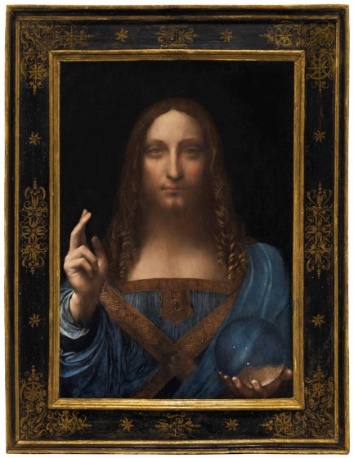
Da Vinci’s Salvator Mundi
The final act of the decade-long Bouvier Affair has come to an end. The series of legal actions by Russian billionaire Dmitri Rybolovlev against the Swiss art dealer Yves Bouvier ended in December 2023. However, there was still the matter of Rybolovlev’s lawsuit against Sotheby’s for allegedly aiding and abetting Bouvier in his supposed fraud. After a 21-day trial, a federal jury in New York took five hours to find Sotheby’s not liable for Rybolovlev’s damages.
The original feud between Rybolovlev and Bouvier started in 2017 when the Russian oligarch alleged that Bouvier had worked as his agent in amassing an impressive art collection. The Swiss dealer acquired thirty-eight artworks for around $2 billion on Rybolovlev’s behalf between 2002 and 2014. The most well-known piece was Salvator Mundi by Leonardo da Vinci, which later sold at Christie’s for $400 million (or $450.3 million w/p), becoming the most valuable painting in the world. Rybolovlev accused Bouvier of defrauding him of over $1 billion, and, in some cases, Sotheby’s helped him do it. Sotheby’s, of course, has denied this, asserting that it obeyed “all legal requirements, financial obligations, and industry best practices during the transactions of these artworks”.
Salvator Mundi took a central role during the trial, as it is the most well-known of the four paintings Bouvier bought at Sotheby’s, which he later sold to Rybolovlev. Bouvier purchased the work in 2013 for $83 million, turning around and selling it to the Russian billionaire for $127.5 million. Rybolovlev claims that Bouvier legally could not charge such large markups since he acted as his agent. However, Bouvier asserted that he acted as a dealer independent of Rybolovlev and could sell paintings for whatever price he wished. Sotheby’s stated that Bouvier was the only buyer to their knowledge and that whatever he did with the paintings afterward was none of their business. Sotheby’s lawyers even argued that Rybolovlev was at fault here for failing to do his due diligence and protect himself against predatory practices. In his lawsuit, however, Rybolovlev alleges that Sotheby’s was aware of Bouvier’s scheme and did nothing to prevent it. Rybolovlev’s legal team presented some evidence that Sotheby’s may have known him to be the final buyer since Sotheby’s specialist Samuel Valette viewed Salvator Mundi with both Bouvier and Rybolovlev before the purchase at the Russian oligarch’s Manhattan apartment. When called to testify, Valette stated that he did not connect Rybolovlev’s presence there to Bouvier buying the painting on his behalf. Rybolovlev further argued that Sotheby’s purposefully inflated their estimate ranges and insurance valuations to hide Bouvier’s markups.
Sotheby’s did acknowledge that Rybolovlev seems to have been taken advantage of but that it was not the auction house’s burden. Furthermore, Rybolovlev and his legal team have found a silver lining to this outcome despite the loss. They say that whether they won or not, the trial allowed the public a short glimpse into the inner workings of the art world, which are often intentionally wrapped up in secrecy. Rybolovlev’s lawyer, Daniel Kornstein, stated that the art market’s “lack of transparency” made their case so difficult to make in the first place.
An Update on the Frankenthaler Foundation

In November 2023, some drama within the Helen Frankenthaler Foundation was made public through a lawsuit brought by one of its former board members. And now, we have one of the first updates in the story since it broke. Not only has a motion to dismiss failed, but we now have slightly more information on the wrongdoing seemingly perpetrated by members of the current board.
When Frederick Iseman filed the initial complaint to the New York State Supreme Court late last year, he presented a list of grievances against the current board members. Among the broader complaints launched against the board is that there are supposedly plans to sell off the Frankenthaler paintings in the Foundation’s possession and close the organization by 2030. However, Iseman also has specific details on the dealings of individual board members. Michael Hecht, for example, is a prominent New York accountant who Iseman accuses of bringing in his own accounting firms to do work for the Foundation, constituting a massive conflict of interest. Lise Motherwell, Frankenthaler’s stepdaughter, is accused of using the Foundation’s name and prestige to promote herself as a curator despite lacking credentials or experience. However, the newest information on the defendants is that concerning Clifford Ross.
Iseman claims that Ross, also a nephew of the artist, used his position in the Frankenthaler Foundation to run a sort of pay-for-play scheme, or as the amended complaint calls it, a “‘pay-for-display’ machine”. The initial suit alleged that Ross had used his position within the Foundation to award grants and large donations to museums and cultural organizations in exchange for displaying his own artwork. However, the amended complaint goes into further detail, giving us specific institutions with which Ross allegedly had “undisclosed ties”, a rough dollar amount of how much money went to these organizations, and the favors Ross received. For example, the Massachusetts Museum of Contemporary Art and the Parrish Art Museum received $41,000 and $55,000, respectively, in exchange for those museums putting on solo exhibitions of Ross’s work. He also allegedly used the Frankenthaler Foundation’s money to appropriate $268,000 to donate to Studio in a School in order to secure a position as a visiting artist. Meanwhile, the Foundation approved $550,000 for the American Academy in Rome in exchange for an arts residency. Ross is also accused of organizing donations of $260,000 to The Brooklyn Rail art journal, $70,000 to Bomb Magazine, and $500,000 to the New York Public Library to secure publicity for his career, including interviews and articles. The newly submitted complaint includes a flowchart showing precisely where Foundation money allegedly went and the services rendered in exchange.
Iseman’s amended complaint seems to have come at the most opportune time. Just hours after submitting it to the courts, the Frankenthaler Foundation filed a motion to dismiss. However, since the motion to dismiss was for the original lawsuit, the Foundation must redo all the paperwork and file a separate motion for the new, amended suit. Iseman is asking for the dismissal of the current board and to be reinstated as the Foundation’s director. The Foundation has responded to the amended complaint by saying that it “demonstrates [Iseman’s] true character and why he was unsuitable to continue serving as a Director of the Foundation.”

Julian Assange
(photo courtesy of Daniel G. Silvers)
Julian Assange has been one of the most controversial figures of the twenty-first century. As the founder of WikiLeaks, he received praise for his journalism concerning American military involvement in the Middle East. However, he later came under fire for his rather conveniently timed leaks, which some say had a drastic impact on the outcome of the 2016 US presidential election. Since 2019, he has been kept in a London prison awaiting extradition to the United States. However, one of his supporters has recently made a promise to destroy millions of dollars of art should Assange die in custody.
In a project called Dead Man’s Switch, Russian artist Andrei Molodkin now claims that he has around sixteen pieces of art, including work by Rembrandt, Picasso, and Warhol, collectively worth around $45 million locked in a 29-ton safe. He further explained that he also has an “extremely corrosive” substance which, in the event of Assange’s death in custody, will be pumped pneumatically into the safe, destroying the contents. Molodkin is a conceptual and performance artist who frequently focuses on the violence and corruption present in the world. Recently, he created a piece called Fifa World Cup Filled with Qatari Oil (The Dirtiest Cup), consisting of a clear resin replica of the FIFA World Cup trophy, which would fill with crude oil at regular intervals. It is a commentary on the allegations of corruption and human rights abuses Qatar has faced since winning the bid to host the tournament in 2010.
As I type this, hearings are taking place in a British court to consider Assange’s final appeal resisting the US’s extradition request. Should he face charges in American courts, he faces a 175-year sentence. Assange is 52 years old with no known underlying health issues. Therefore, it will take a while for him to die of natural causes. If Molodkin is concerned that Assange will be put to death by the state as a result of his conviction, he might be able to rest easy. The United States is seeking extradition so he can be tried under the Espionage Act of 1917. The last time the government executed anyone under the Espionage Act was Julius and Ethel Rosenberg in 1953. If the concern is that someone will try to target him in prison, that’s a different matter. Both Molodkin and Assange’s lawyers have said that Assange would be in great danger in prison. The recent death of prominent Russian dissident Alexei Navalny may have some people on edge. But regardless of whether Assange would be in any actual danger in prison, it’s important to focus on Molodkin’s central idea. The statement behind it is that people, particularly people in power, seem to care more about assets and property than they do human life. The same core idea inspires climate activists to stage museum demonstrations, defacing paintings and gluing themselves to the walls.
Molodkin’s safe is currently at his residence in France but will be moved to an unspecified museum. According to the artist, the only way the art comes out is if Assange is released from custody.
Still Missing: The Skylight Caper
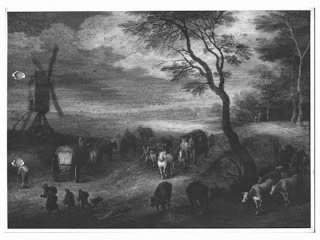
A photograph of
Landscape with Vehicles & Cattle
by Jan Brueghel the Elder,
the only painting recovered
after the theft.
All I wanted to do was a single post about unsolved art thefts. However, I have a habit of going down rabbit holes, so now it has morphed into a five-part series that I’m calling Still Missing. It’s about some of the stolen works of art that we have not recovered. While you might be familiar with the Gardner Museum Heist in Boston or when the Mosa Lisa was stolen in 1911, here are some incidents you may not have heard of. Or, at least, I hadn’t heard of them until I began. Some are still open cases, yet that doesn’t mean a lot of people still know about them. But let’s start with probably the most well-known one out of the way: the Skylight Caper in Montreal.
In the early morning hours of September 4, 1972, three armed men entered the Montreal Museum of Fine Arts (MMFA). It was Labour Day weekend in Canada, and many people in town were distracted not only by the holiday but also by the recent defeat of the Canadian national hockey team by the Soviets. Many of the MMFA’s executives were out of town on vacation. The three thieves used climbing spikes attached to their boots to scale a tree next to the museum, allowing them to get to the roof. One of the skylights was undergoing repairs, meaning it was removed and replaced with a simple plastic tarp. This allowed the team to enter the building without tripping any alarms. The men subdued three security guards and soon started taking things out of their displays and off the walls. After only 90 minutes, they stole approximately $2 million of art, including paintings by Rembrandt, Rubens, Corot, Millet, Gainsborough, and Courbet. These paintings were all rather small; making them easy to carry (fortunately, they only made off with half of what they removed because, as they exited the building the alarm went off causing them to dropped several items, including works by Picasso and El Greco). The MMFA published a list of the stolen items, ensuring they could not be sold through legitimate channels. Some speculate that the case was never fully solved because attention was diverted from the robbery. The very next day, the Palestinian group Black September took eleven members of the Israeli Olympic team hostage during the Summer Olympics in Munich.
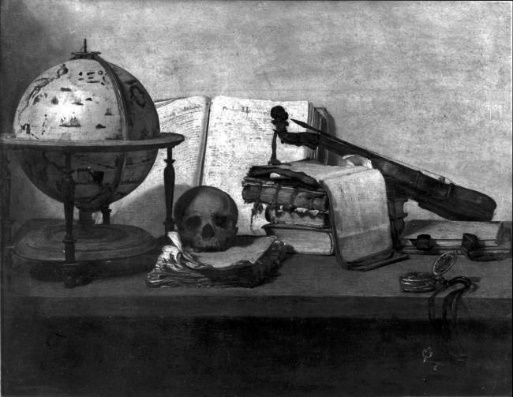
A photograph of
Vanitas Still-Life by Jan Davidsz van Heem
Some have said the robbery may have been an inside job since the thieves knew about the skylight being repaired. However, this is not likely since they could have obtained that information anywhere. Furthermore, the thieves exited through a side door and tripped the alarm, making an inside job a little implausible. Police initially suspected a group of students at Montreal’s École des Beaux-Arts. These were mainly French-speaking students who had faced poor treatment by the Anglophone museum staff. The security guards did notice that two of the three thieves were French speakers. The local police watched these students for two weeks, but this was a dead end.
There were several attempts to ransom the stolen items. They initially mailed photos of the paintings to the museum, demanding $500,000 for their safe return. The museum asked for more proof than the photos, so the thieves told them to look in a specific locker at Montreal Central Station. There, they found Landscape with Vehicles & Cattle by Brueghel the Elder, an oil painting on a 7-by-10-inch copper plate. This is the only painting recovered from the theft. Many theories exist regarding where the rest are, ranging from being smuggled out of the country to Europe or Latin America to the thieves destroying the paintings to prevent them from being used as evidence. The most valuable items still missing include Landscape with Cottages by Rembrandt (estimated at $5 million in 2003) and a vanitas still-life by Jan Davidsz van Heem.
Though the incident was widely publicized, only a few remember the incident today. The police file is still open on the case, and some of the stolen paintings are among the most valuable works of art that remain missing.
____________________
The Art Market
Sotheby’s New York “A Scholar Collects” Sale
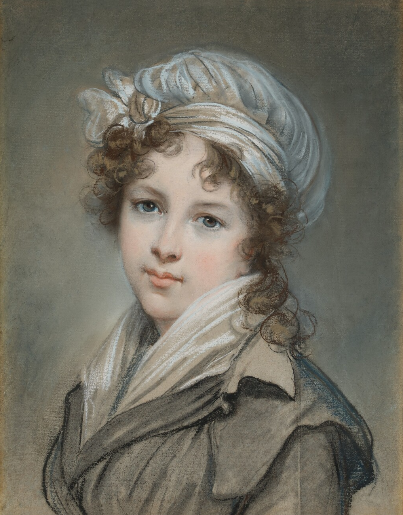
Self-Portrait in Traveling Costume
by Élisabeth Louise Vigée Le Brun
On Wednesday, January 31st, both Christie’s and Sotheby’s hosted a series of sales centered on Old Masters. While these sales mostly did not perform as well as expected, the one exception was the first sale of the day, entitled A Scholar Collects. This sale was dedicated to the collection of Joseph Baillio, a prominent art historian and specialist in eighteenth-century French art. Baillio’s collection reflected his specialization, consisting mainly of sketches, drawings, and paintings by artists like Hubert Robert, Jean-Philippe-Guy Le Gentil, and, most importantly, Élisabeth Louise Vigée Le Brun.
Vigée Le Brun was a very important French artist of the eighteenth century and definitely one of the most prolific women in the arts at the time. She made a name for herself as a portraitist in the years before the Revolution of 1789. In her work, she often skirted the boundaries between the outgoing Baroque and Rococo and the incoming Neoclassical styles. Her skill led to her recognition by the French upper crust, including Queen Marie Antoinette, of whom Vigée Le Brun created around 30 portraits. However, she not only painted her aristocratic patrons but is now known for her many self-portraits, including the sale’s top lot, called Self-Portrait in Traveling Costume. This self-portrait, one of twelve lots by the artist included in the sale, was created in 1789, shortly before she fled Paris for Rome due to her ties to the queen. The inscription on the back is dated 1816 when the artist gifted the work to a man named Ménageot. This refers to François-Guillaume Ménageot, director of Rome’s Académie de France, who helped her find an apartment there. The portrait was, therefore, likely a gift to Ménageot when she returned to Paris. The self-portrait is in incredible condition and also serves as a priceless document for art historians with the inclusion of the inscription on the verso. Sotheby’s specialists, therefore, placed a $1 million high estimate on the portrait. With multiple bidders squabbling over the pastel-on-paper work, the final hammer price ended up at $2.5 million (or $3.1 million w/p). This makes it the second-most valuable work by the artist ever sold at auction, just behind Portrait of Muhammad Dervish Khan, which sold in 2019 for $7.2 million w/p.
The second place lot was also by Vigée Le Brun. Portrait of the Duchess of Guiche is a prime example of the artist’s work as the French nobility were her main patrons. Sotheby’s specialists remarked that the portrait is unique since the duchess’s clothes are somewhat unusual. Much of her clothing is made from gauze fabric and silk, which “accentuate more than they conceal”. According to Baillio, the subject’s clothing and pose may have been inspired by an earlier painting called The Broken Pitcher by Jean-Baptiste Greuze. The portrait hit the low end of its $500K to $700K estimate range (or $635K w/p).
For modern viewers, the sale’s third-place lot is a history painting. However, it was not so far in the distant past for the artist. Napoleon Presenting the Newborn King of Rome to Empress Marie Louise was painted in 1811 by Jean-Baptiste Isabey. A student of Jacques Louis David, Isabey came to prominence during the Napoleonic era and enjoyed the patronage of the imperial couple Napoleon and Joséphine. As I mentioned in an earlier article on Ridley Scott’s biopic Napoleon, the Emperor understood how to use art to craft his image. Isabey’s painting shows a likely idealized version of a momentous occasion for the French Empire: the birth of an heir. In 1810, Napoleon divorced Joséphine mainly due to her inability to have children, later marrying the Duchess of Parma, Marie Louise. In the painting, we see the aftermath of the birth of Napoleon’s son, who was given the titles Prince Imperial and King of Rome immediately upon his birth. For such a great occasion, Isabey also includes several prominent members of Napoleon’s family and household in the room. It is suspected that Isabey created this watercolor to mark the occasion as well as portray Napoleon in a far more sympathetic light as a kind, gentle new father. Like the Duchess of Guiche portrait, Isabey’s watercolor exactly hit its low estimate at $300K (or $381K w/p).
Now for the surprises: four lots sold for more than double their high estimates, including the first Vigée Le Brun work to cross the block, The Little Eugène de Montesquiou-Fézensac Asleep. Sotheby’s specialists called this and another infant portrait “some of the most tender and moving depictions of young children in French eighteenth-century art”. Estimated to sell for no more than $60K, the sleeping aristocrat made nearly three times that at $170K (or $215.9K w/p). However, the one lot that blew its estimate out of the water was an etching by Jean Godefroy. It is a copy of Isabey’s watercolor showing the Congress of Vienna in 1815. Here, Europe’s major power players planned out the continent’s new political order after Napoleon’s downfall. The etching shows several famous figures, including the Duke of Wellington, Charles Maurice de Talleyrand-Périgord (Napoleon’s former foreign minister), and Klemens von Metternich (chancellor of Austria). Expected to sell for no more than $1K, the group portrait sold when the hammer came down at $8.5K (or $10.8K w/p).
In the end, twelve of the forty-one lots sold within their estimates, giving Sotheby’s specialists a 29% accuracy rate. An additional four lots (10%) sold below their estimates, while an incredible seventeen (41%) sold above their estimates. The remaining eight lots (20%) went unsold. With so many lots selling far above their estimates, including the Vigée Le Brun self-portrait, the sale as a whole surpassed its total high estimate of $4,017,600, reaching $5,087,000.
Queen’s Painting Heads to Auction

Untitled by Queen Margrethe II
of Denmark
Royals involved in the arts is far from a new concept. For centuries, royalty and nobility served as the primary patrons for visual artists. More recently, however, many crowned heads have dabbled in their own creative pursuits. King Charles III is an avid watercolorist, while his great-great-great-grandmother Queen Victoria was known to have occasionally painted floral still-lifes, like those sold at auction last year. Now, another royal painting is heading to auction, but this time, the artist is around to see it sell. Queen Margrethe II of Denmark, who recently abdicated in favor of her son Frederik X, has been drawing and painting for most of her life. And now one of her paintings is expected to sell at auction for at least $11,000.
The former queen has been involved in the arts for decades. One popular story goes that shortly before becoming queen in the early 1970s, Margrethe created a series of illustrations for JRR Tolkien’s fantasy trilogy, The Lord of the Rings. Under a pseudonym, she sent these drawings to the author. Although Tolkien typically disapproved of illustrations in his books, he seemed to have greatly enjoyed the Queen’s work. It is said that when Tolkien died in 1973, two of the Queen’s illustrations were in his coat pocket. In 1977, when a new edition of his books was to be published, the Folio Society chose the Queen’s drawings for both the English and Danish editions. Apart from painting and drawing, her other hobbies include embroidery and costume design. As Queen, she worked with the Royal Danish Ballet to design sets and costumes for their productions.
In terms of paintings, though, several of her works have appeared at auction before, almost always in Denmark. The most recent, created her auction record: an acrylic-on-canvas painting measuring 31.5 by 35.4 inches entitled Fra de yderste fjelde, or From the outermost mountains. It sold at Bruun Rasmussen in March 2021 for 230,000 Danish kroner, or approximately $36,800. The painting being offered at Rasmussen this year is untitled, created in 1988 and presented by the queen as a gift for Hans Sølvhøj, who served as her court’s hofmarskal, or the equivalent of a steward or a chamberlain. The painting has stayed in the family ever since and has been exhibited several times, both in Denmark and internationally. Rasmussen has not specified the sale that will feature the painting, but has given it an estimate range of 75,000 to 100,000 kroner, or between $10,900 and $14,000.
___________________
February’s Top Instagram Reels
Here are our top posts for the past month. Still, none have hit the level of last year’s #1 post – Cortes’s Champs-Elysees, Arc de Triomphe is now over 604,000 views and 20,200 likes - https://www.instagram.com/reel/C1FdLIHvohW/ )
Rehs Galleries, Inc.
Antoine Blanchard’s – Le Pantheon – about 65,500 views and 6420 likes
https://www.instagram.com/reel/C3QFVdvMYNw/
Edouard Léon Cortès’ – Porte St. Denis, Hiver – over 24,400 views and 1,355 likes
https://www.instagram.com/reel/C3c2DfyLcSy/
Edouard Léon Cortès’ - Paysanne et son chat près de l'âtre – over 13,400 views and 1,170 likes
https://www.instagram.com/reel/C3EC0Tdvef_/
Rehs Contemporary Galleries
New Arrivals – Stuart Dunkel – over 17,400 views and 310 likes
https://www.instagram.com/reel/C3G5m3IrmcB/
Artist Spotlight: Ben Bauer – over 10,300 views and 260 likes
https://www.instagram.com/reel/C20UN23PDDL/
New Arrivals – Andrew Orr - over 5,960 views and 155 likes
https://www.instagram.com/reel/C2_HiZxrJSR/
____________________
Deeper Thoughts
Street Art Digitization in the UK

Escaping Convict at Reading Gaol
by Banksy
(photo courtesy of Steve Daniels)
A British arts charity has announced that it will add several thousand pieces of street art to its public art database. The charity Art UK, founded in 2003, works to provide online access to every public art collection in Britain. The organization has documented over 300,000 works of art kept by over 3,400 museums and other cultural institutions to make Britain’s art more accessible. And last week, they announced a new initiative that aims to document and digitize the country’s street art and murals. According to Art UK’s Deputy Director Katey Goodwin, this project will take approximately three years and aims to digitize approximately 5,000 murals across Britain. The organization understands that street art is always at risk, partially because some street art is classified as graffiti and is therefore covered up or defaced. However, they also recognize that the buildings themselves, upon which some street art is made, are at risk: “From shopping centres and railway stations to churches and museums, we will celebrate the thousands of painted and sculptural murals in our communities. Many of these are at risk of decay or demolition, so the work of our staff and volunteers will ensure that a permanent record is created.” This project comes not long after Art UK’s successful efforts to catalogue over 50,000 sculptures in museums and public spaces across Britain.
The project will undoubtedly include the digitization of murals by the anonymous street artist Banksy. Art UK has already digitized the mural Escaping Convict at Reading Gaol, painted on the red brick wall of a former prison. Preserving street art has been a topic of conversation in British art circles. Cities like Glasgow are taking measures to protect street artists by setting up walls where graffiti artists will be free to create without fear of having their work destroyed by police or a local council. Several have used Banksy as an example of how some works of street art are given appreciation and prestige when done by a well-known artist, yet they are covered up and defaced when made by an unknown.
However, murals and other forms of street art are incredibly important in certain places in Britain. Northern Ireland, in particular, has a long history with murals, serving as an important form of political expression during the Troubles, which lasted until 1998. Although the conflict has been officially over for more than 25 years, there is always work to be done. Northern Irish public art not only expresses one political opinion or another but commemorates important individuals or events. Art UK has recognized that, with the murals in cities like Belfast and Derry, the documentation needs to be handled with the utmost sensitivity, which is why they are working with professors from Ulster University’s Transitional Justice Institute.
Art UK’s street art digitization includes cooperation with the National Lottery Heritage Fund, which has allocated £250,000 for the project. Art UK also plans to work with organizations like CultureStreet, VocalEyes, Historic England, and the Pilgrim Trust.
Italy Gifts Replica of Destroyed Statue to Iraq
Iraq recently received a gift from Italy, replacing an ancient artifact destroyed in 2015. Restoration expert Nicola Salvioli led a team to re-create a ninth-century BCE Assyrian statue from the ancient city of Nimrud in Iraq. Dubbed The Bull of Nimrud, the replica was made using a 3D printer and then coated in stone dust to imitate the statue’s original material. Despite the name, it is not actually a bull but an ancient mythological creature called a lamassu. These creatures have a bull’s body, an eagle’s wings, and a bearded man’s head. During the Neo-Assyrian Empire, the lamassu were often placed at the entrances of buildings, especially palaces, since they were seen as royal guardians.
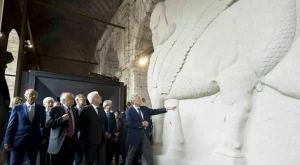
Former Italian culture minister
Francesco Rutelli with
Italian president Sergio Mattarella
viewing the Bull of Nimrud
at the Colosseum
(photo courtesy of the
Italian Ministry of Culture)
The original statue upon which this replica is based was destroyed in 2015. At the time, the Islamic State had become known for destroying an unknowable amount of art and artifacts that were considered un-Islamic. Therefore, pre-Islamic artifacts comprised a substantial amount of destroyed art in the region. This was the same fate as the Buddhas of Bamiyan in Afghanistan, which Taliban forces destroyed after considering them pagan idols. When the Islamic State took the city of Mosul, they sought to destroy the archaeological site of the ancient city of Nimrud, which had been used as the capital of the Neo-Assyrian Empire between 879 and 706 BCE. When Iraqi forces retook the city of Mosul and the Nimrud archaeological site in October and November 2016, it was reported that approximately 90% of the ancient city was completely destroyed by bulldozers.
The Bull of Nimrud replica was originally exhibited to the public in the Colosseum in Rome not long after Nimrud’s destruction. The statue was later exhibited at UNESCO headquarters in Paris. And now, the Italian government has officially gifted this replica to Iraq, standing outside the entrance of the Basra Museum. Italy’s culture minister, Gennaro Sangiuliano, stated that this single act of friendship between the two countries will help to “advance international collaboration in the field of cultural heritage protection and to work for the enhancement of the heritage of humanity.”
More Art at the Airport
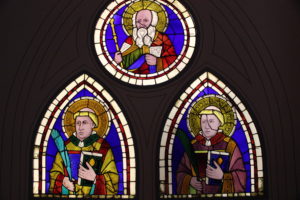
Giotto’s windows from the
Museo dell’Opera di Santa Croce
(photo courtesy of Miguel Hermoso Cuesta)
Last year, the Italian government, in an attempt to promote the country’s art and culture to incoming tourists, set up a display case in the middle of Terminal 1 at Fiumicino Airport, just outside of Rome. There, travelers could view a work by the great Baroque sculptor Gian Lorenzo Bernini. And now, after less than a year, they are deciding to give it another go by showcasing a work of art by arguably an even greater figure in the Italian arts.
While he might not have as much recognition as Raphael and Michaelangelo, the late-thirteenth, early fourteenth-century painter Giotto is one of the greatest figures in the hagiography of European artists. This is because of his prevalence immediately before the Italian Renaissance. His style, which depicted human figures far more naturalistically than his predecessors and contemporaries, revived artistic traditions that had been neglected for centuries. He thereby laid the foundation upon which later Renaissance masters would build. He is probably best known for his frescoes at the Scrovegni Chapel in Padua, showing the life of Christ. However, Giotto was a Tuscan who spent most of his life in and around Florence. Some of his work can still be seen today in the city’s churches. The Basilica of Santa Croce is one such church where you can see his work on the walls in several of the basilica’s chapels. However, you can also view his work in the church’s museum, the Museo dell’Opera, which includes a series of stained glass windows. These windows were attributed to Giotto in the 1980s by the Hungarian art historian Miklos Boskovits, who claimed that the windows were, at the very least, designed by Giotto and possibly even partially painted by him. The museum contents are state property, falling under the care of the Interior Ministry’s Religious Buildings Fund. Several of these stained glass panels will now be displayed in the middle of Fiumicino Airport Terminal 1.
Placing the Giotto panels in the middle of the airport terminal is just one aspect of a larger campaign to celebrate the 50th anniversary of Aeroporti di Roma. This company manages and operates Rome’s two airports at Fiumicino and Ciampino. Italy’s Interior Minister Matteo Piantedosi stated the point of the installation was “to bring people to works of art and bring works of art to people.” Similar to the Bernini sculpture from last year, the question arises of why the Italian government thinks this is necessary. I understand Italy is not doing well economically, but is this the way to fix things? Most people I know considering a visit to Italy are already going there to experience the country’s art and culture. I wrote last year regarding the Bernini sculpture, “I’m not sure [tourists will] need any more prompting by making sure you see a Baroque masterpiece the moment you step off the plane.” At this point, should the culture and interior ministries continue with this PR tactic, they might be taking priceless cultural artifacts and treating them like new cars you see at the mall. Let’s hope it won’t come to that.
Trompe L’Œil: Optical Illusion in Art
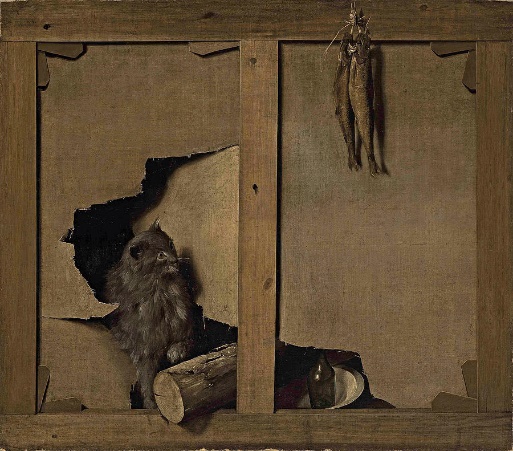
Trompe l’oeil with a cat
and a wooden log
by Louis-Léopold Boilly
In certain genres or styles, some painters wish to express their talents through deception. Almost as if to say, “I’m so good I made you look twice.” Most often, this takes the form of painting something so realistic that the viewer thinks it is, in fact, real. It’s a strange yet understandable impulse to want to confuse your audience. But this is a far older impulse than people think. While illusions and other tricks in painting are often grouped under the French term trompe l’oeil (literally meaning deceives the eye), highly realistic painting like this predates the term by literal millennia, involving everything from hidden insects to fake curtains.
One of the oldest references to trompe l’oeil involves the ancient Greek painters Zeuxis and Parrhasius. The story goes that Zeuxis created a painting of some grapes so realistic that birds came down to snatch them up. To one-up him, Parrhasius invited Zeuxis into his studio and asked him to pull a curtain aside to reveal a painting. Zeuxis, however, was surprised to find himself simply clawing at a painting of some curtains.
The French painter Louis-Léopold Boilly was the first to coin the term trompe l’oeil in painting. Previously, Boilly had been known for painting portraits and genre scenes, but around the year 1800 switched to these illusionistic paintings. These ranged from tabletops cluttered with papers, coins, and playing cards to the backs of canvases torn open to reveal various objects. Boilly also found that while this showed off his own talent, he could be incredibly playful. One example is a painting on a circular piece of marble meant to resemble a small tabletop. Boilly added several nods to a man named Pourtalès, a member of a Swiss banking family who commissioned the painting. The work includes a variety of Swiss coins, the patron’s portrait in miniature, and some papers which include Boilly’s business card.
But while Boilly was the first to use the phrase trompe l’oeil in reference to painting, he was pulling from a long tradition of illusionistic painting that European artists had been building upon since the Renaissance. However, this was normally reserved for frescoes and other forms of decorative painting rather than anything on a canvas or panel; basically to make a room seem larger than it actually is. Using foreshortening, artists could make flat ceilings appear domed, like what Andrea Pozzo achieved at the Jesuit Church in Vienna. Andrea Mantegna pulled off a similar trick in his fifteenth-century frescoes at the Ducal Palace in Mantua, accompanied by painted-on architectural features like molding and scrollwork that are prominent on the ceiling.
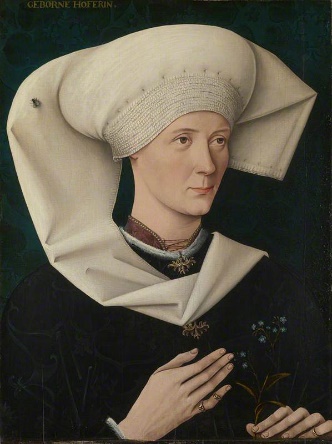
Portrait of a Woman
of the Hofer Family
But while most Renaissance-era trompe l’oeil consisted of these frescoes and murals, it also took another form: bugs. Known as the musca depicta (from the Latin for painted fly), fifteenth- and sixteenth-century painters often hid insects like flies in their paintings. Not only was this a display of skill, but many apocryphal stories tell that, while they were apprentices, some artists put insects in their masters’ paintings as a joke. The bugs seemed so lifelike that the master would try to shoo them away only to find that it’s not real. Writers like Filarete and Vasari have told these stories about artists like Giotto and Mantegna. But while these are likely just myths, the flies and other insects are real. Many portraits have these little hidden insects, like Sebastiano del Piombo’s portrait of Cardinal Bandinello Sauli, who has a fly resting on his knee. Then there is Portrait of a Woman of the Hofer Family by an unknown portraitist who included a fly in the woman’s veil. Later on, in the seventeenth century, we start to see these flies infiltrate still-life paintings by Clara Peeters and Balthasar van der Ast.

Bright Eyes
by Anthony Wachulis
In the seventeenth century, we start seeing trompe l’oeil on canvas as more than a fly. During this time, Dutch artists in particular were known for creating paintings that gave the appearance of three-dimensional objects. Cornelis Norbertus Gijsbrechts, for example, would create works showing items hung up on a wall partially hidden by a blue curtain drawn back against a background with the grain of unvarnished wood. But probably his simplest yet most impressive work is The Reverse of a Framed Painting. This same style of trompe l’oeil ended up persisting for several centuries. Later examples include the paintings of the nineteenth-century Irish-born American artist William Harnett. His contemporary, Adriaen van der Spelt, also made use of curtains in his work. While mainly specializing in floral still-life paintings, Van der Spelt might be best known for one painting that includes a blue curtain suspended by a rod obscuring about a third of the flowers we’re supposed to see. It was not unusual to have curtain rods installed above paintings in your home at that time. Normally, this was so its owner could create a more dramatic reveal, or possibly because it contained a rather erotic subject. Therefore, a curtain in front of a painting would not have been that unusual for a seventeenth-century viewer, which means it would have been an even greater surprise to see the curtain is itself part of the painting.
To this day, trompe l’oeil continues to serve as an impressive art form. Contemporary painters like Edgar Mueller, John Pugh, and Anthony Wachulis continue this variety of painting. Some artists like Pugh execute it on a much larger scale than his predecessors. They also tend to be publicly viewable, making illusionistic art more accessible. Others, like Wachulis, follow in the footsteps of Gijsbrechts and Harnett, creating hyperrealistic works that make it seem like, at first glance, it’s not a painting in a frame but some small trinkets in a box hanging on the wall. So whenever you see a painting that you have to look twice at, remember that there are centuries of tradition, silliness, and just a hint of ego behind it all.
Cézanne Mural Found On Parents' Walls
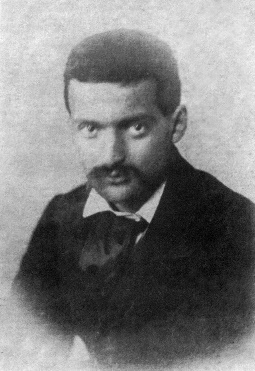
Paul Cézanne, 1861
A lot of kids draw on the walls of their house. Most of the time, their parents scrub away the crayon and think it’s over. But if your child turns out to be Paul Cézanne, it may be good to not touch anything. That is more or less what they did, as we discovered recently when a work crew uncovered a mural by the Impressionist/Post-Impressionist master at his parents’ house.
The Bastide du Jas de Bouffan is a 12-acre manor in Aix-en-Provence, which Louis-Auguste Cézanne purchased in 1859. At the time, his son Paul attended the local university, where he studied law. However, Paul was only doing this at his father’s insistence and was attending classes at the École de dessin in the evenings. His desire to pursue art was no secret from his father since Louis-Auguste occasionally indulged his son’s passion for painting and drawing. In 1860, Louis-Auguste allowed his son to create several murals throughout the house, enabling him to imitate masters like Courbet and Ruisdael. It would only be another year before he abandoned his legal studies to study art in Paris. Cézanne created nine (known) murals for the house’s interior. In 1880, he later established his studio in the house. All those murals have since been removed, transferred to canvases, and displayed in museums in France, Japan, and the United States. However, a tenth mural has recently been rediscovered during renovations on the house to prepare it in time for events celebrating Cézanne and his connections to Aix-en-Provence.
This work is in very poor condition, as has been hidden under layers of wallpaper and paint for over a century-and-a-half. It is called Entrée du port (Entrance to the Port), with several ships in a harbor, showing influence from Claude-Joseph Vernet and Claude Lorrain. The only fragments that exist now are some buildings and the pennants and flags from the tops of masts in the upper left. According to local specialists, Entrée du port was only viewable for a few years since he covered it up with another mural dating to 1864. Construction workers uncovered Entrée du port back in August, but the announcement was delayed until this past weekend. This is rather exciting for Aix-en-Provence. With the other murals now gone, Entrée du port is the only work by Cézanne anywhere in the city. Furthermore, it also provides an example of the artist’s early work, which allows art historians to gain insight into his artistic development.
Cézanne’s online catalogue raisonné, curated by the Société Paul Cézanne, will soon include Entrée du port alongside the twenty-two other murals Cézanne created throughout his life. Once the restorations are complete, the Société plans on turning the Bastide into a research center dedicated to the artist.
The Rehs Family
© Rehs Galleries, Inc., New York – March 2024
